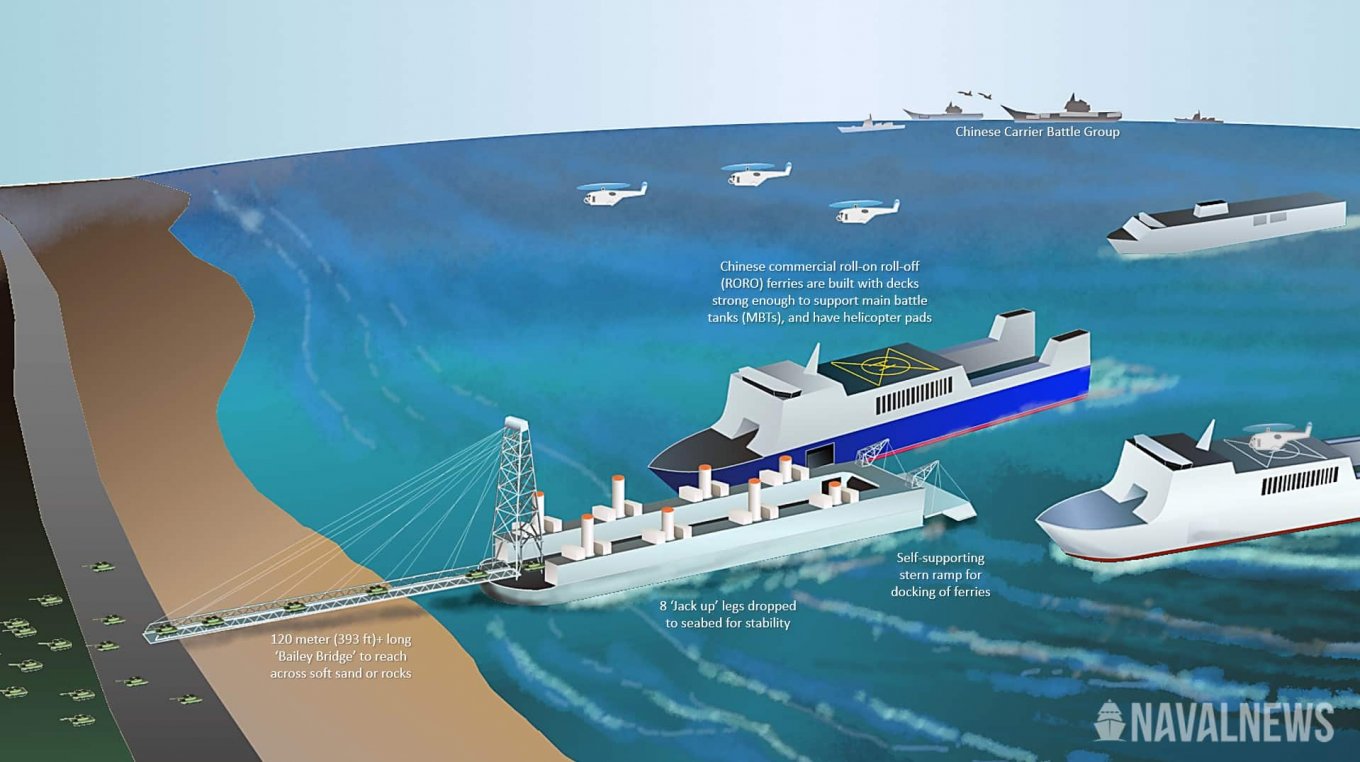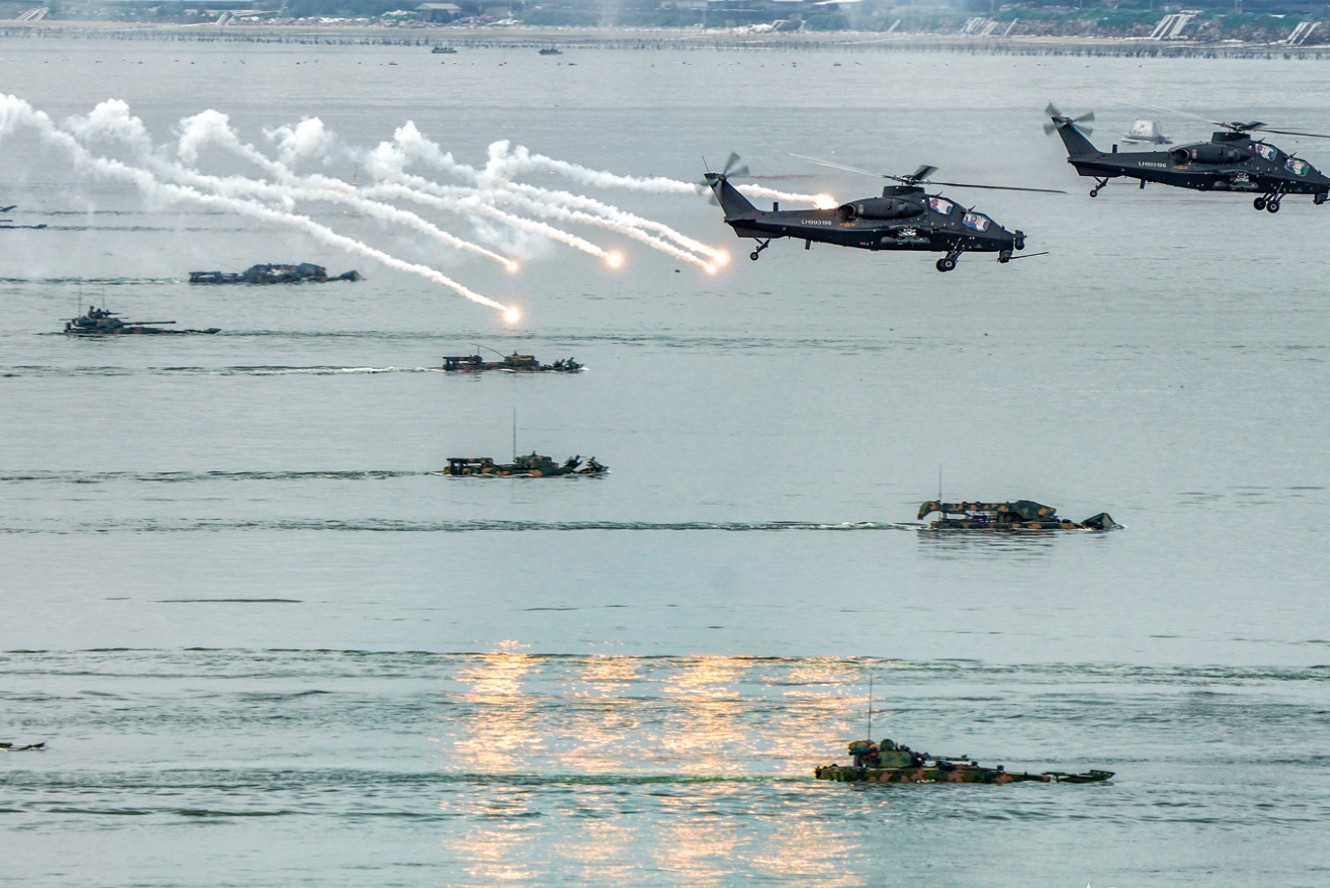The People's Republic of China is currently constructing at least five specialized landing barges that could serve as platforms for unloading tanks onto unprepared shores in the event of an invasion of Taiwan.
The design of these specialized barges resembles the British Mulberry Harbours from World War II, which were notably used during the Allied landings in Normandy. This information is reported by Naval News.

As detailed by the publication's authors, the construction of these barges is taking place at the Guangzhou Shipyard International (GSI) in Guangzhou, southern China. This shipyard was previously involved in the construction of a research "aircraft carrier" with three "islands" for UAVs, which Defense Express had covered in an earlier article.
A distinctive feature of these barges is the presence of retractable bridges measuring 120 meters in length, located at the bow, allowing heavy equipment such as tanks or fuel trucks to move across them. It is also noted that these landing barges are equipped with specialized devices designed to ensure stability even in rough seas.
Interestingly, the first prototype of such specialized landing barges was built by China back in 2022, but it is evident that only now has the project moved into serial production.

It is highlighted that the construction of these specialized barges will help China overcome one of the fundamental obstacles it faces in organizing an invasion of Taiwan.
Specifically, the Navy of the People's Liberation Army lacks a sufficient number of specialized landing ships capable of deploying equipment and personnel on unprepared shores. Therefore, in planning the landing, the Chinese rely on formally civilian roll-on/roll-off vessels that can, if necessary, carry a significant amount of military equipment, as reported back in 2021.
The advantage of roll-on/roll-off vessels is that they also have a ramp at the bow for easy unloading of equipment from the holds; however, a disadvantage is that such vessels cannot approach the shore closely. The aforementioned specialized landing barges could assist China in conveniently unloading military equipment at any point, even from formally civilian roll-on/roll-off vessels.
Regarding the aforementioned Mulberry Harbours from World War II, it is worth emphasizing for better comparison that these were essentially floating "artificial ports," constructed in two units. These floating structures were so robust that over a span of nine months, they facilitated the transfer of 2.5 million people, 500,000 units of various equipment and armaments, and 4 million tons of various materials to the Normandy coast for the defeat of the Nazis.
You can see what these Mulberry Harbours looked like in this publicly available footage: